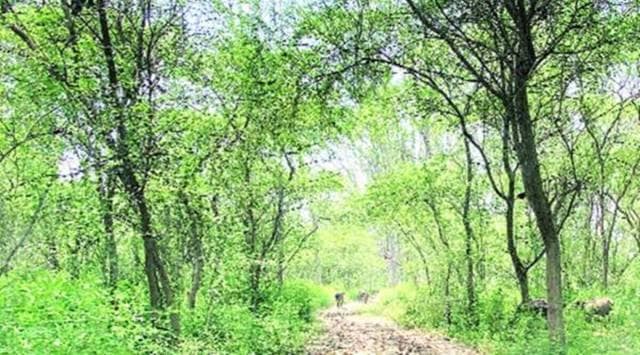Karnataka: Over 2,600 acre forest land converted to create tree parks, shows data
This includes 1,275.54 acre of reserve forest, 337.07 acre of district forest, 292.24 acre of micro forest, 61.77 acre of protected forest and 401.69 acre of declared forest among others
 A total of 535 persons have been booked for violation of forest laws.(Representational image)
A total of 535 persons have been booked for violation of forest laws.(Representational image)Over the years, a total of 2,656.683 acre of forest land in Karnataka has been converted to create tree parks. This includes 1,275.54 acre of reserve forest, 337.07 acre of district forest, 292.24 acre of micro forest, 61.77 acre of protected forest and 401.69 acre of declared forest among others, reveals data from the Karnataka Forest department.
Quoting from the Forest Conservation Act, a senior forest official said, “Converting such a huge area of forest for non-forestry purposes without prior approval of the Union Environment Ministry is illegal. Each and every work undertaken in the forest requires approval of the Union Environment Ministry.”
According to the Karnataka Forest Department, since the inception of the tree park scheme in the year 2011-12, a total of 132 tree parks have been developed across the state.
Despite massive opposition from the citizens, the government has planned to convert J B Kaval Reserve Forest into a tree park. Since a tree park was already created in a part of J B Kaval Reserve Forest area, environmentalists have questioned the rationale behind creating another tree park.
Former Indian Forest Service Officer Dr U V Singh stated that forest and tree parks have different landscapes. “While forests are non-human centric, tree parks are human centric. Tree parks cannot be made at the cost of reserve forest. It takes thousands of years for a natural forest to grow and reach the climatic climax. We have already lost a huge chunk of forest area,” he added.
In the last 50 years, Bengaluru has lost a huge number of reserve forests to urban development. Over 140 acre of the Machohalli Reserve Forest was lost to industrial sites and tree parks. Similarly, 400 acre of Peenya plantations were lost to high rise buildings and 650 acre of Thindlu-Allasandra plantations were lost to infrastructural projects. More than 10 layouts have come up on the forest lands in Bengaluru.







